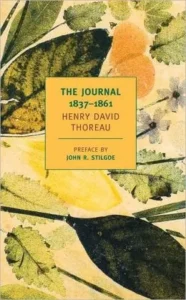Curiosity as an Instrument of Love: Thoreau and the Little Owl
INSPIRATIONAL, 7 Oct 2024
Maria Popova | The Marginalian – TRANSCEND Media Service
 Among the things I most cherish about science is the way it anneals curiosity. True curiosity is an open wonderment at what something is and how it works without emotional attachment to the outcome of observation and experiment. It is only when we cede emotional attachment that we can be truly free from judgment, for all judgment is feeling — usually some species of fear — masquerading as thought. And when we judge, we cannot understand. True curiosity is therefore a form of love, because, as the great Zen teacher Thich Nhat Hanh so plainly and poignantly put it, “understanding is love’s other name.”
Among the things I most cherish about science is the way it anneals curiosity. True curiosity is an open wonderment at what something is and how it works without emotional attachment to the outcome of observation and experiment. It is only when we cede emotional attachment that we can be truly free from judgment, for all judgment is feeling — usually some species of fear — masquerading as thought. And when we judge, we cannot understand. True curiosity is therefore a form of love, because, as the great Zen teacher Thich Nhat Hanh so plainly and poignantly put it, “understanding is love’s other name.”
There have been few more curious and loving observes of this world than Henry David Thoreau (July 12, 1817–May 6, 1862). “Life! who knows what it is, what it does?” he exclaimed on the pages of his journal — perhaps the book in my library most populous with highlights and marginalia — a tender record of Thoreau’s yearning to understand the nature and workings of life in all its physical and psychic manifestations, not as a scientist but as a poet. “Every poet has trembled on the verge of science,” he conceded as he read books of ornithology to deepen his reverence for the birds he observed, and yet it was with a poet’s eyes that he observed them, animated by the belief that “the poet’s relation to his theme is the relation of lovers.”
Because curiosity is a supreme act of unselfing, it is at its most difficult and most rewarding when aimed at what is most unlike ourselves — as Thoreau’s is in his journal account of a singular encounter from the autumn of 1855.

One “raw and windy” October afternoon, paddling down a stream under the overcast skies, Thoreau sees a small screech-owl perched on the lee side of a three-foot hemlock stump, looking at him with its “great solemn eyes” and raised horns. An epoch before science began illuminating the mysteries of what it’s like to be an owl, he marvels at this creature so profoundly other:
It sits with its head drawn in, eying me, with its eyes partly open, about twenty feet off. When it hears me move, it turns its head toward me, perhaps one eye only open, with its great glaring golden iris. You see two whitish triangular lines above the eyes meeting at the bill, with a sharp reddish-brown triangle between and a narrow curved line of black under each eye…. You would say that this was a bird without a neck. Its short bill, which rests upon its breast, scarcely projects at all, but in a state of rest the whole upper part of the bird from the wings is rounded off smoothly, excepting the horns, which stand up conspicuously or are slanted back.

After observing the bird for ten minutes, transfixed by its strangeness, Thoreau decides he must study the creature closely to better understand its umwelt. He lands the boat and carefully makes his way to the hemlock from the windward side, surprised to find the owl unperturbed by his approach. Unlike the ornithologists of his day, who killed in order to know and reduced living species to “specimens” — even Audubon, for all his tenderheartedness, shot every bird he drew and described — Thoreau sets out to capture the living bird. (“If you would learn the secrets of Nature, you must practice more humanity than others,” he writes in another journal entry.) Sneaking up behind the hemlock, he springs out his arm to gently grasp the little owl, which is so surprised that it offers no resistance but only glares at him “in mute astonishment with eyes as big as saucers.” He swaddles it in his handkerchief, rests it at the bottom of the boat, and paddles home, where he builds a small cage for observation. He marvels at the seemingly neckless owl puffing out its feathers and stretching out its neck, slowly rotating its head in that singular owl way. He tries to imitate its hiss “by a guttural whinnering.” He offers his hand, to which the bird clings so tightly that it draws blood from his fingers. He regards its “squat figure” and “catlike” face, the fine white down covering its legs all the way down to the sharp talons.
When dusk falls, he sits down to record his observations and becomes the object of observation himself, the owl looking out at him with its immense eyes, intent and perfectly still. Thoreau writes:
It would lower its head, stretch out its neck, and, bending it from side to side, peer at you with laughable circumspection; from side to side, as if to catch or absorb into its eyes every ray of light, strain at you with complacent yet earnest scrutiny. Raising and lowering its head and moving it from side to side in a slow and regular manner, at the same time snapping its bill smartly perhaps, and faintly hissing, and puffing itself up more and more, — cat-like, turtle-like, both in hissing and swelling. The slowness and gravity, not to say solemnity, of this motion are striking.
[…]
He sat, not really moping but trying to sleep, in a corner of his box all day, yet with one or both eyes slightly open all the while. I never once caught him with his eyes shut.
When morning comes, Thoreau sets out to return the bird to its home, rowing back to the hill with the hemlock. But to his surprise, the owl refuses to leave the box and has to be gently shaken out of it. With raw reverence for this creature, this mind so incomprehensibly other yet so strangely kindred, he records their farewell:
There he stood on the grass, at first bewildered, with his horns pricked up and looking toward me. In this strong light the pupils of his eyes suddenly contracted and the iris expanded till they were two great brazen orbs with a centre spot merely. His attitude expressed astonishment more than anything. I was obliged to toss him up a little that he might feel his wings, and then he flapped away low and heavily to a hickory on the hillside twenty rods off.
There is something poignant in this account — a disquieting reminder of how accustomed we too grow to the false comforts of our traps, how unwilling to leave them for the terror of freedom, how we too may need a gentle push to feel our own wings. Our habitual way of seeing is also a comfort and a trap. In another entry, Thoreau wonders what it might be like to “witness with owls’ eyes” the life of the forest, then concludes that what we perceive of the world is what we receive in the world and each person “receives only what he is ready to receive, whether physically or intellectually or morally.”

Complement with the strange and wondrous science of how owls hear with sound, then revisit Thoreau on living through loss, the Milky Way and the meaning of life, and his introvert’s field guide to friendship.
_______________________________________
 My name is Maria Popova — a reader, a wonderer, and a lover of reality who makes sense of the world and herself through the essential inner dialogue that is the act of writing. The Marginalian (which bore the unbearable name Brain Pickings for its first 15 years) is my one-woman labor of love, exploring what it means to live a decent, inspired, substantive life of purpose and gladness. Founded in 2006 as a weekly email to seven friends, eventually brought online and now included in the Library of Congress permanent web archive, it is a record of my own becoming as a person — intellectually, creatively, spiritually, poetically — drawn from my extended marginalia on the search for meaning across literature, science, art, philosophy, and the various other tendrils of human thought and feeling. A private inquiry irradiated by the ultimate question, the great quickening of wonderment that binds us all: What is all this? (More…)
My name is Maria Popova — a reader, a wonderer, and a lover of reality who makes sense of the world and herself through the essential inner dialogue that is the act of writing. The Marginalian (which bore the unbearable name Brain Pickings for its first 15 years) is my one-woman labor of love, exploring what it means to live a decent, inspired, substantive life of purpose and gladness. Founded in 2006 as a weekly email to seven friends, eventually brought online and now included in the Library of Congress permanent web archive, it is a record of my own becoming as a person — intellectually, creatively, spiritually, poetically — drawn from my extended marginalia on the search for meaning across literature, science, art, philosophy, and the various other tendrils of human thought and feeling. A private inquiry irradiated by the ultimate question, the great quickening of wonderment that binds us all: What is all this? (More…)
Go to Original – themarginalian.org
Tags: Henry David Thoreau, Inspirational, Life, Literature, Research, Wisdom
DISCLAIMER: The statements, views and opinions expressed in pieces republished here are solely those of the authors and do not necessarily represent those of TMS. In accordance with title 17 U.S.C. section 107, this material is distributed without profit to those who have expressed a prior interest in receiving the included information for research and educational purposes. TMS has no affiliation whatsoever with the originator of this article nor is TMS endorsed or sponsored by the originator. “GO TO ORIGINAL” links are provided as a convenience to our readers and allow for verification of authenticity. However, as originating pages are often updated by their originating host sites, the versions posted may not match the versions our readers view when clicking the “GO TO ORIGINAL” links. This site contains copyrighted material the use of which has not always been specifically authorized by the copyright owner. We are making such material available in our efforts to advance understanding of environmental, political, human rights, economic, democracy, scientific, and social justice issues, etc. We believe this constitutes a ‘fair use’ of any such copyrighted material as provided for in section 107 of the US Copyright Law. In accordance with Title 17 U.S.C. Section 107, the material on this site is distributed without profit to those who have expressed a prior interest in receiving the included information for research and educational purposes. For more information go to: http://www.law.cornell.edu/uscode/17/107.shtml. If you wish to use copyrighted material from this site for purposes of your own that go beyond ‘fair use’, you must obtain permission from the copyright owner.